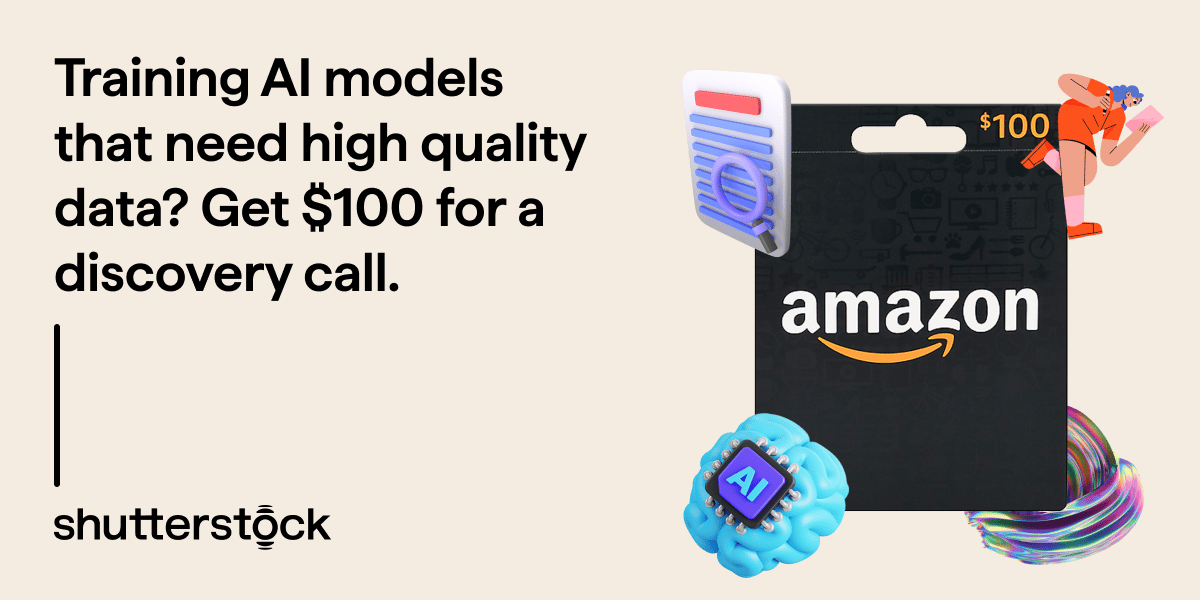- Agent Pulse
- Posts
- #50: 95% Failure, 16% Job Loss: AI’s Reality Check
#50: 95% Failure, 16% Job Loss: AI’s Reality Check
AgentPulse: Your Weekly Dose of AI Agents News.

AArena | Submit Agent | Leaderboard | Landscape Map | Agencies | Advertise
Hey, it’s OP.
In today’s Agent Pulse:
📢 MIT: 95% of GenAI Pilots Are Failing
📢 Stanford: AI is eating entry-level jobs
⚔️ Gemma is #1 on Agent Arena
✨ Featured Agents
📡 Agent Signals
🎓 Free courses
📚 Must-Read Papers
🗺️ Landscape Map
You read, we listen. Got feedback? Just hit reply - we’d love to hear from you.
Enjoying Agent Pulse?
Support independent AI insights for just $5/month. Upgrade to Premium →
Training Generative AI? It starts with the right data.
Your AI is only as good as the data you feed it. If you're building or fine-tuning generative models, Shutterstock offers enterprise-grade training data across images, video, 3D, audio, and templates—all rights-cleared and enriched with 20+ years of human-reviewed metadata.
With 600M+ assets and scalable licensing, our datasets help leading AI teams accelerate development, simplify procurement, and boost model performance—safely and efficiently.
Book a 30-minute discovery call to explore how our multimodal catalog supports smarter model training. Qualified decision-makers will receive a $100 Amazon gift card.
For complete terms and conditions, see the offer page.
📢 TOP Headlines
MIT Says 95% of GenAI Pilots Are Failing — But That’s Not the Real Story

A new MIT study made headlines with a brutal stat: 95% of enterprise GenAI pilots never make it past “cool demo” stage. They don’t drive revenue, don’t cut costs, don’t hit the P&L. On paper, that looks like failure.
But here’s the bigger picture:
1. Pilots aren’t meant to “win”
Enterprises run pilots as experiments. If nine out of ten fail, that’s not a disaster - it’s a filtering mechanism. The real problem isn’t the failure rate, it’s that companies aren’t learning fast enough from those failures. Too many pilots die in the lab instead of evolving into focused, repeatable playbooks.
2. GenAI is being pointed at the wrong targets
Most companies spend money on “flashy” front-end use cases - chatbots for sales, marketing copy generators. They impress at a board demo but rarely move the needle. Meanwhile, the boring stuff - invoice reconciliation, procurement, contract review, compliance workflows - is where the true value lies. That’s not sexy AI, but it’s where the cost savings and ROI live.
3. The integration tax is real
AI doesn’t fail because the models are weak. It fails because companies treat it as a bolt-on tool instead of embedding it into workflows. A chatbot that spits out draft text isn’t transformation. A system that rewires your entire supply chain or back office is. And that requires patience, messy integration work, and executive sponsorship - not just a pilot budget.
4. “Shadow AI” tells the truth
Employees already vote with their keyboards. MIT found that shadow AI - people secretly using ChatGPT at work - is thriving. Why? Because personal tools are often more useful than the official pilots. That gap is a huge signal: people don’t want more pilots; they want tools that actually make their jobs easier.
5. The winners play small to scale big
The rare 5% of successful projects have a pattern:
They start with one painful, measurable use case (e.g., cutting document review time by 80%).
They partner smartly with vendors instead of reinventing the wheel.
They embed ownership at the edge - line managers, not just central “AI labs.”
Our take: The “95% failure” headline is misleading if you think in venture terms. If VC portfolios returned 5% unicorns, we’d call that success. The issue isn’t failure - it’s focus. Enterprises want broad AI transformation, but the only way to get there is through narrow, gritty wins that scale. Treat AI like infrastructure, not like a gadget. Don’t ask, “what can AI do?” Ask, “where does my business bleed time and money, and can AI plug that leak?”
If you’re an AI builder, this is the gap to attack:
Help companies turn pilots into playbooks.
Package boring but high-ROI workflows.
Make integration so painless that line managers, not IT, drive adoption.
That’s where the next wave of adoption and dollars will actually happen.
AI Is Gutting Entry-Level Jobs — Or Reshaping Them?

A new Stanford study finds employment among 22–25 year olds in AI-exposed roles has dropped 13–16% since late 2022. Translation: entry-level workers in software, support, and other white-collar jobs are the “canaries in the coal mine” of workplace automation.
But the nuance is more interesting: firms that use AI to replace tasks cut junior headcount. Firms that use AI to augment work actually grow early-career jobs.
The bigger picture
The pipeline problem: Entry-level roles are the farm system for future leadership. If AI wipes out grunt work, we risk starving the pipeline that produces tomorrow’s senior engineers, analysts, and managers.
Automation ≠ augmentation: A chatbot that replaces customer reps kills entry-level jobs. An AI assistant that helps reps handle 3x more tickets grows the team. The how matters more than the what.
It’s not about wages: Pay hasn’t collapsed. What’s disappearing are the slots themselves. That signals structural disruption, not just a cyclical downturn.
Mentorship is irreplaceable: Older workers aren’t hit as hard, because their value comes from judgment, coordination, and context—things AI still can’t replicate.
The new “first job” may look nothing like the old one
If AI has automated away repetitive entry work, what’s left to onboard junior talent?
AI Apprenticeships: Entry-level workers could be trained to manage and audit AI systems rather than do the raw tasks themselves.
Prompt-first jobs: Think “AI navigator” roles - junior staff who specialize in guiding models, checking output, and escalating edge cases.
Meta-skills as differentiators: Creativity, problem framing, and collaboration may become the new “entry-level Excel skills.”
This isn’t just a workforce story - it’s a design challenge for employers. Companies that figure out how to grow young talent in an AI-native environment will build stronger pipelines and avoid future leadership droughts.
What to watch
Policy dashboard: Researchers suggest governments track job shifts in real time and incentivize augmentation over replacement.
Corporate playbooks: Firms that find “AI + junior talent” models could scale faster than those chasing pure automation.
Education gap: Universities may need to rethink how grads are prepared - not for doing rote work, but for working alongside AI.
Our Take: The story isn’t just that AI is killing entry-level jobs - it’s that we need to reinvent what “entry-level” means. Companies that augment instead of automate will keep their pipelines healthy. Everyone else risks a talent bottleneck that won’t show up until it’s too late.
AI voice dictation that's actually intelligent
Typeless turns your raw, unfiltered voice into beautifully polished writing - in real time.
It works like magic, feels like cheating, and allows your thoughts to flow more freely than ever before.
Your voice is your strength. Typeless turns it into a superpower.
⚔️ AArena: All-in-One AI Workspace
Get Sh*t Done with AI.
Bring your task. Get best results.
TOP 5 AI (Aug 25):
Gemma 3 4b
Qwen3 32B
Grok 4
Llama 3.3 70B
ChatGPT-4o
Create How-to Videos in Seconds with AI
Stop wasting time on repetitive explanations. Guidde’s AI creates stunning video guides in seconds—11x faster.
Turn boring docs into visual masterpieces
Save hours with AI-powered automation
Share or embed your guide anywhere
How it works: Click capture on the browser extension, and Guidde auto-generates step-by-step video guides with visuals, voiceover, and a call to action.
✨ Featured Agents
TeammatesAI: Autonomous AI Teammates
TensorStax: Autonomous AI Agents for Data Engineering
TheLibrarian.io: WhatsApp AI Personal Assistant
Agentverse: Search and Discover AI Agents
📡 TOP Agent Signals
Anthropic launched a research preview of a Claude agent that lives in Chrome, rolling out to ~1,000 Max subscribers with a broader waitlist
OpenAI announced it’s winding down the Assistants API
Allen Institute for AI (AI2) unveiled Asta, an open ecosystem aimed at trustworthy scientific AI agents
ElevenLabs shipped an agent testing framework to help teams create, manage, and evaluate conversational agents
Microsoft Security published guidance on securing and governing autonomous agents
NetworkWorld outlined the three key categories enterprises are rallying around for AI agents
Microsoft partner blog showcased real customer wins
Deloitte discusses how agentic AI can transform digital audit
LivePerson discusses the evolution of conversational AI into agentic AI systems
🎓 FREE AI Courses
New! LangGraph: Deep Research
Anthropic:
AI Fluence Course, designed for everyday users of AI.
Google: Introduction to LLM
BeeAI: Agent Communication Protocol
HuggingFace: Model Context Protocol (MCP)
Microsoft: Generative AI for Beginners
OpenAI: Advanced Prompt Engineering

📚 Must Read Papers
New! Stanford: Six Facts about the Recent Employment Effects of AI (Doc)
New! MIT: The GenAI Divide: State of AI in Business 2025 (Doc)
New! NVIDIA: Small Language Models are the Future of Agentic AI (Doc)
Google:
Microsoft: Governing Agents (Doc)
OpenAI: A Practical Guide to building Agents (Doc)
AWS: Agentic AI frameworks (Doc)
KPMG: AI Quarterly Pulse Survey: Q2 2025 (Doc)
Stanford University: Future of Work with AI Agents (Doc)
Thomson Reuters: Agentic AI 101 (Doc)
BCG: AI at Work (Doc)
ServiceNow: Enterprise AI Maturity Index 2025 (Doc)
IBM: Agentic AI in Financial Services (Doc)
Capgemini: Rise of Agentic AI (Doc)
Accenture: Technology vision 2025 (Doc)
Infosys: Agentic Enterprise AI Playbook (Doc)

🗺️ AI Agents Landscape Map
We’re mapping thousands of AI Agents. Find your next AI agent today — explore thousands of options on our interactive Landscape Map.
How'd we do? |
Reach 23,000+ Readers:
Newsletter is read by VCs, founders, engineers, managers and tech professionals.







Reply